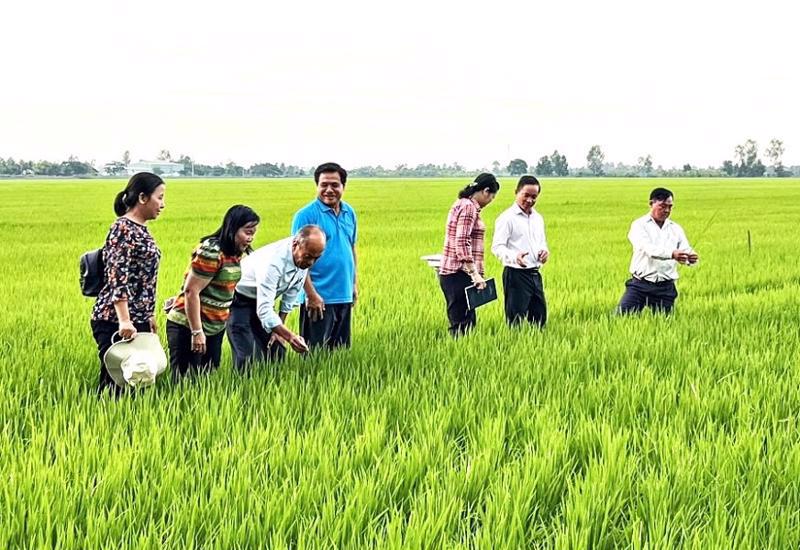Initial assessments show that the rice farming model under the project to develop 1 million ha of specialised rice cultivation with high quality and low emissions associated with green growth in the Mekong Delta region from now to 2030 has yielded positive results, according to the Ministry of Agriculture and Rural Development (MARD).
The model has been applied for the 2024 Summer-Autumn crop in Can Tho city, showing that input costs have decreased by 10-15%, including those in seed, fertilisers, and irrigation water.
The yield of the pilot model ranged from 6.13 - 6.51 ton per ha compared to 5.89 ton per ha in the normal one, while its profits reached VND21 - 25.8 million ($830 - 1,020) per ha, surpassing the normal model by VND1.3 - 6.2 million ($51 - 243) per ha.
Moreover, the pilot model contributed to reducing CO2 emissions by 2 tons per ha compared to the model that removes rice straw from the fields and by 12 tons per ha compared to that practicing rice straw burial after harvesting.
Importantly, many businesses have committed to purchasing all rice produced under these pilot models.
Addressing a meeting held on July 17 to review the implementation of the project, Deputy Prime Minister Tran Luu Quang asked relevant ministries, agencies and localities to accelerate the implementation of the project.
The project creates a new production method suitable for the world's production and consumption trends; and generates a breakthrough in agriculture thinking in the Mekong Delta, which is facing the effects of rapid and unpredictable climate change, thus contributing to improving the income and living conditions of farmers and businesses, and helping Vietnam realise its goal of achieving net zero emissions by 2050, he said.
The MARD has implemented seven pilot models in Can Tho city, and Dong Thap, Kien Giang, Tra Vinh, and Soc Trang provinces.









 Google translate
Google translate